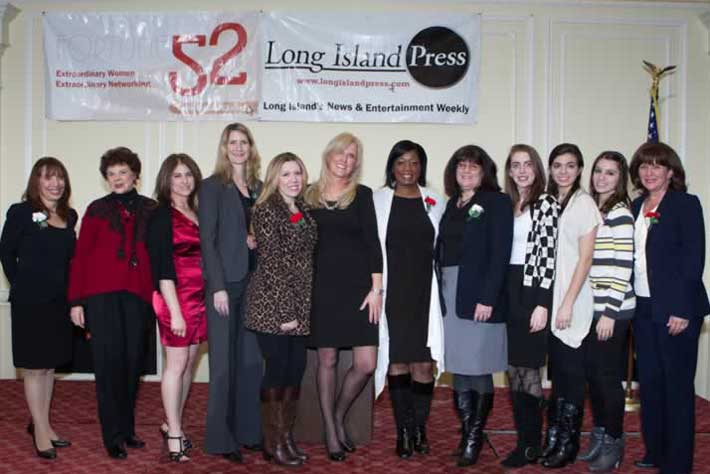
Sophia Gaynor is a beautiful little girl, just 20 months old, whose eyes light up when her mother and father, Catherine and Vincent, walk into her room, and she giggles at her infant brother, Jackson. Thanks to the tireless efforts of her courageous parents, Sophia’s story has already inspired thousands of people to join them in finding a cure for the life-threatening condition that affects far too many children.
Sophia was born on February 27, 2009, and just a few weeks later, Catherine says, “My husband noticed something was wrong. She never moved or lifted her legs, never tried to lift her head.”
Sophia’s body is missing the Survival Motor Neuron 1 (SMN1) gene, which enables the nerves in her spinal cord to survive. She suffers from Spinal Muscle Atrophy (SMA), a degenerative, genetic disease that affects one in 6,000 babies. SMA affects the part of the nervous system that controls voluntary muscle movement, but does not affect the brain and in many cases, SMA babies are unusually bright and sociable.
“Her body can’t move, she can’t breathe on her own, but she’s not a vegetable,” Catherine says and adds, “She’s so aware, she’s smart.”
Catherine and Vincent, each from large families, were both found to be carriers of SMA. Tests have shown that Sophia’s younger brother, Jackson, is SMA free. According to Catherine, there are about 400 families in the greater New York area that have children diagnosed with SMA.
“I don’t know why everyone keeps saying it’s rare,” Catherine says. “It’s not. One in 40 [people] carry the gene. Since Sophia’s birth, my OB/GYN now tests everyone for SMA. It’s a simple blood test.”
Sadly, Sophia’s parents learned that SMA has no cure and no proven treatments. SMA kills more babies than any other genetic disease. The research is promising, but was in desperate need of funding to move ahead.
The Gaynor’s think big. Last year they founded Sophia’s Cure Foundation to assist in funding clinical research for SMA and to offer support to families by providing advocacy, awareness and education. In a very short time they have done what no other non profit on Long Island has accomplished: they won the Pepsi Refresh Contest, guaranteeing that a check in the amount of $250,000 will be used for their cause. “My husband created an alliance with other organizations,” Catherine explained about how they won the contest. The first installment of $125,000 has already been received by Ohio State University’s College of Medicine, which Catherine and Vincent selected because scientists at OSU’s Department of Pediatrics and Children’s Research Institute are conducting the most promising research. “This is a major win for the SMA community,” said Dr. Brian Kasper, the recipient of the Sophia’s Cure grant.
The Gaynors often speak to other families coping with SMA-affected children and they willingly share their experience. “Support is very important to us, especially in the beginning,” Catherine says. “We want to advocate for others. You have to ask questions and don’t assume you know where the [research] money is going. You don’t need a degree to understand what the doctors are saying,” she says.
Catherine and Vincent don’t know if the research will be completed in time to benefit Sophia, but they hope that it will save many other babies from the disorder in the future. “Most type 1 cases don’t live past two years, and Sophia’s four months away,” Catherine says. “We’re very optimistic. If she could breathe or sit up alone, I would be the happiest person in the world.”
So far, the regimen for treating children with this genetic disorder has not advanced much further than keeping them as comfortable as possible. Vowing to explore every avenue they could find to help their daughter, the Gaynors took Sophia to Madison, Wis., where they conferred with Dr. Mary Schroth, considered the No. 1 doctor in the U.S. for treatment of SMA, at the University of Wisconsin’s American Family Children’s Hospital. Dr. Schroth has been instrumental in the development and advancement of respiratory care for children with the disorder. In October, the Gaynors welcomed three families to their home, all from the Long Island area, whose children have SMA, so they each could have a one-on-one meeting with Dr. Schroth, who was visiting New York. “She examined [the] children and talked about what kind of treatment they needed,” Catherine says. Their connection with the doctor is just another example of the incredible impact the Gaynors have had on the community, both here on Long Island and around the country. Their supporters are going to extraordinary lengths to help Sophia and others beat SMA.
“It really is an amazing feeling I get whenever I am among other SMA families, I feel like we all have this quiet understanding of each other,” Catherine says.
Sophia requires around the clock care, with the Gaynors doing the lion’s share of the tasks that need to be done to keep Sophia comfortable. Because of the fragile nature of her daughter’s condition, Catherine rarely leaves the house. “It’s sad in a way,” her mother says. “I want to show Sophia the world. It’s cruel. [SMA] shuts out the world.”
But the Gaynors remain optimistic. They believe that their daughter has given hope to those who had lost it and they will continue their fight for a cure for Sophia and thousands of other SMA children.
For more information email [email protected] or go to www.sophiascure.com. To see a video of Sophia and the Gaynors, go to www.youtube.com/user/sophiascure.
If you know a super woman who deserves good Fortune—and a profile—e-mail your nominations to Beverly at [email protected].







